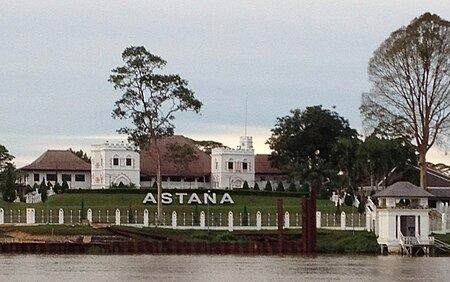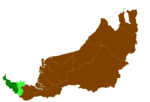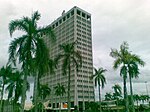The Astana, Sarawak
1870 establishments in Sarawak19th-century architecture in MalaysiaBuildings and structures in KuchingEngvarB from February 2019Houses completed in 1870 ... and 3 more
Official residences of Malaysian state leadersPalaces in MalaysiaTourist attractions in Kuching

The Astana (Malay: Astana Sarawak) is a palace in Kuching, Sarawak, Malaysia, on the north bank of the Sarawak River, opposite the Kuching Waterfront. It is the official residence of the Yang di-Pertua Negeri Sarawak, the governor of Sarawak. The name is a variation of 'istana', meaning 'palace'. It was built in 1870 by the second White Rajah, Charles Brooke, as a wedding gift to his wife, Margaret Alice Lili de Windt. The palace is not normally open to the public, although the landscaped gardens are, which can be reached by a boat ride across the Sarawak River. It is part of the Kuching Heritage Trail.
Excerpt from the Wikipedia article The Astana, Sarawak (License: CC BY-SA 3.0, Authors, Images).The Astana, Sarawak
Q101-3, Kuching Petra Jaya
Geographical coordinates (GPS) Address External links Nearby Places Show on map
Geographical coordinates (GPS)
| Latitude | Longitude |
|---|---|
| N 1.5636111111111 ° | E 110.34555555556 ° |
Address
Astana
Q101-3
93000 Kuching, Petra Jaya
Sarawak, Malaysia
Open on Google Maps











